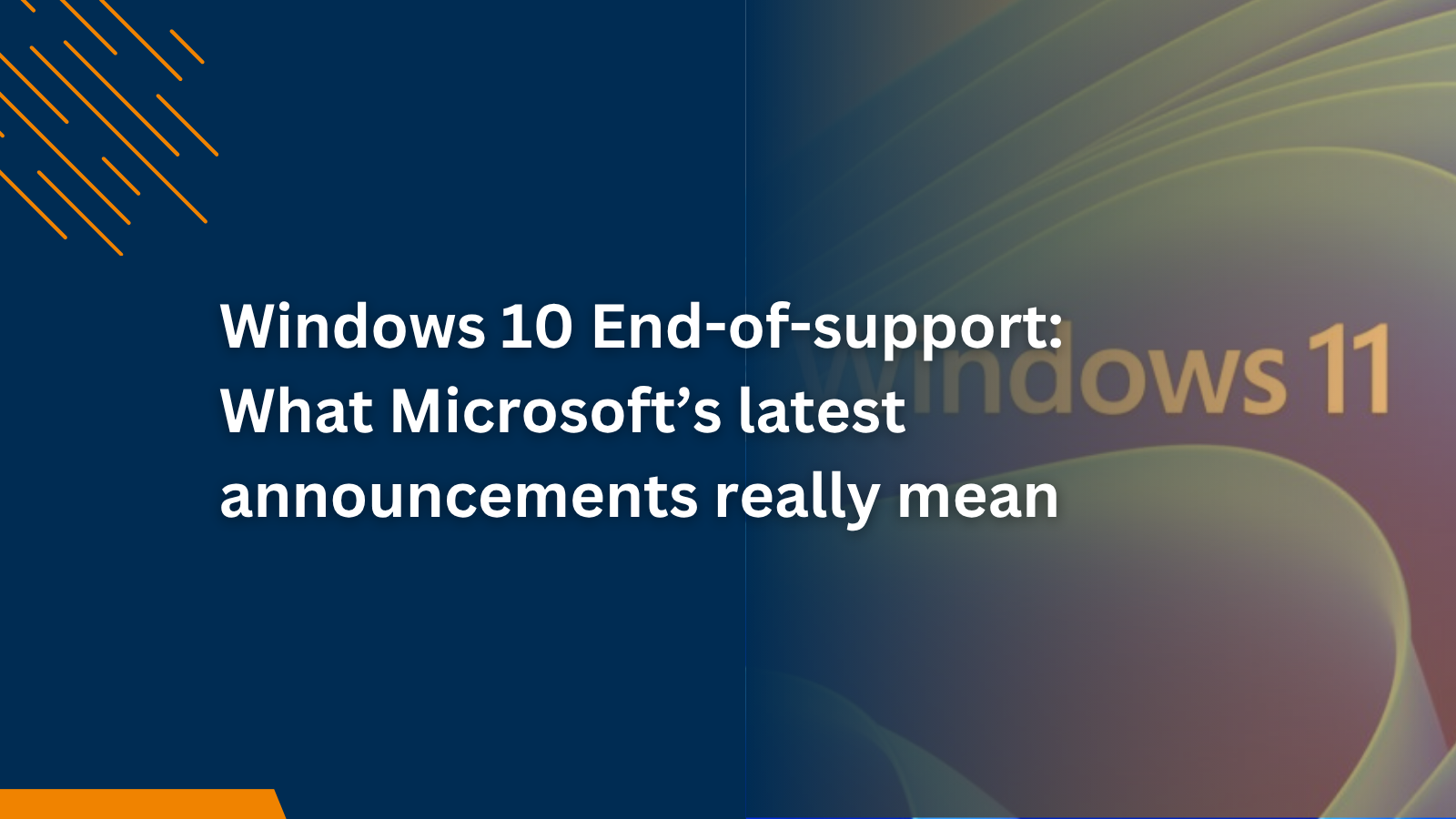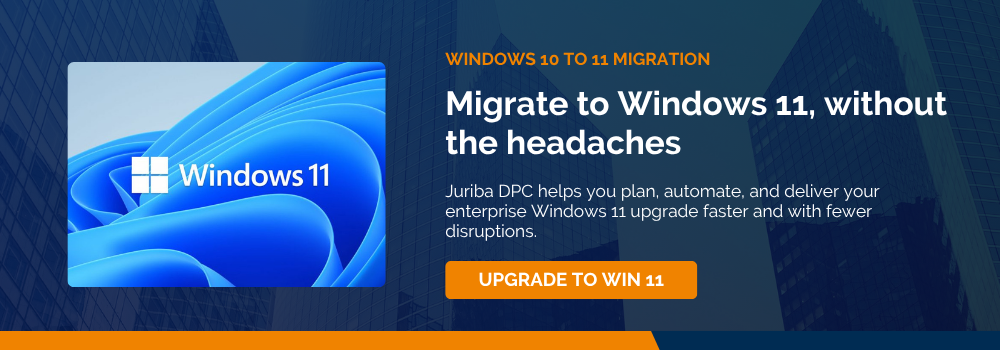Windows 10 End-of-support: What Microsoft’s latest announcements really mean for your Windows 11 migration
October 14th, 2025
2 min read

Microsoft’s October 14, 2025, end-of-support date for Windows 10 has arrived. But in the past few months, Microsoft has made a series of announcements that have left many organizations wondering: Do we really need to migrate now? Or do we have more time?
The short answer: you still need to migrate. The end-of-life (EOL) date hasn’t changed. But there are new nuances, and if you don’t understand them, you risk making the wrong call.
For enterprise IT leaders, this deadline isn’t just about devices - it’s about compliance, cost, and continuity.
Here is what has been confirmed, what it means for you, and how to use this time wisely:
The official end-of-life date hasn't changed:
October 14, 2025
Microsoft is still ending free security updates, feature updates, and technical support for Windows 10 on October 14, 2025.
Important: Any device still running Windows 10 beyond this date will be unsupported unless enrolled in an Extended Security Update (ESU) program.
What Microsoft has announced recently
1. Free Extended Security Updates (ESU) in Europe
-
In the European Economic Area (EEA), Microsoft will now provide one additional year of free ESU for consumer Windows 10 devices - extending security updates through October 13, 2026.
-
Key condition: devices must authenticate with a Microsoft account at least once every 60 days.
2. Paid ESU Program for Organizations
-
Globally, Microsoft offers a paid ESU subscription for organizations (via volume licensing and cloud programs).
-
This provides up to three additional years of security updates after 2025.
-
Pricing varies - but like past ESU programs, costs typically increase each year to encourage migration.
💡 Tip: ESU is a stopgap, not a strategy. It should be used for exceptions, not as a substitute for a structured migration plan.
3. Microsoft 365 / Office App Support Extended to 2028
-
Microsoft 365 Apps will continue receiving security updates on Windows 10 until October 10, 2028.
-
Feature updates, however, will stop earlier (August 2026 for most channels).
💡 Tip: Don’t confuse app support with OS support. MS Office running until 2028 doesn’t protect Windows 10 from OS-level vulnerabilities or compliance risk.
What these changes don't solve
It’s easy to look at these extensions and think, “We are fine for now.” But here’s what remains unchanged:
-
No more patches or fixes -> every new vulnerability remains open, leaving systems increasingly exposed.
-
Compliance exposure -> regulations like GDPR and industry standards require supported software; running Windows 10 past EOL puts you at risk.
-
Vendor and ecosystem erosion -> hardware, drivers, and apps will stop being certified and supported on Windows 10.
-
Operational drag and rising costs -> IT teams will spend more time firefighting, while ESU fees increase year after year.
💡 Unsupported does not mean losing access to Microsoft support; it really means being on your own for security, stability, and compliance.
The smart strategy: Use the breathing space wisely
Instead of pausing migration, organizations should treat these announcements as an opportunity to:
-
Plan more strategically: align Windows 11 migration with hardware refresh cycles.
-
Pilot early: start with representative groups to flush out issues.
-
Segment exceptions: use ESU only where migration is blocked.
-
Strengthen governance: map out resources, capacity, and dependencies.
How Juriba Helps You Get Back on Track
Juriba DPC is specifically designed for high-pressure, large-scale transitions. Even if your migration is starting later than planned, DPC helps you:
-
Highlight readiness gaps across devices, apps, and users in one dashboard.
-
Plan realistically with capacity insight to avoid over-committing resources.
-
Keep users engaged through self-service scheduling and automated comms.
-
Prove compliance with full reporting for regulators and auditors.
With Juriba DPC, you can turn Microsoft’s extended timelines into an advantage and not a false sense of security.
Conclusion
Microsoft’s latest announcements may offer short-term relief, but the destination hasn’t changed: Windows 11 is the future. With the deadline almost here, organizations that have not started need to acknowledge they are behind. But acting now still matters, and every week you delay increases the time you are running unsupported, with escalating security, compliance, and cost risks.
Getting a structured plan in place now is the fastest way to shrink that window of exposure and bring your organization back onto a secure footing.
Vinicius Ramaciotti is a Product Manager at Juriba, dedicated to delivering meaningful outcomes that solve real customer problems. With over fifteen years of experience in the IT industry, he brings a strong foundation in managing complex projects and driving product strategy. Vinicius is passionate about understanding customer needs and translating them into impactful solutions that enhance user experience and business value. He fosters a culture of collaboration and continuous improvement, ensuring that every product iteration moves the needle for customers. His commitment to quality and innovation makes him a key contributor to Juriba’s success.
Topics:


